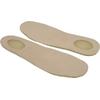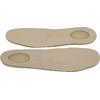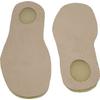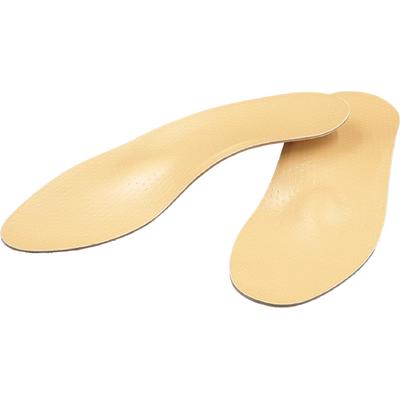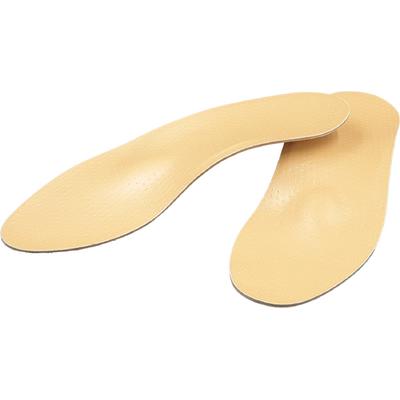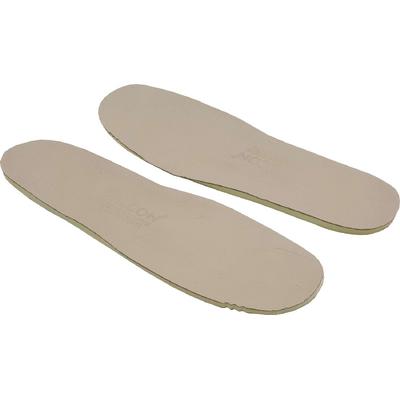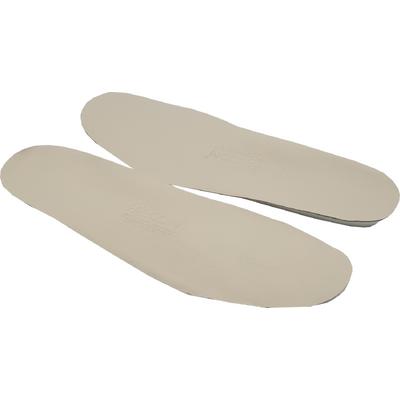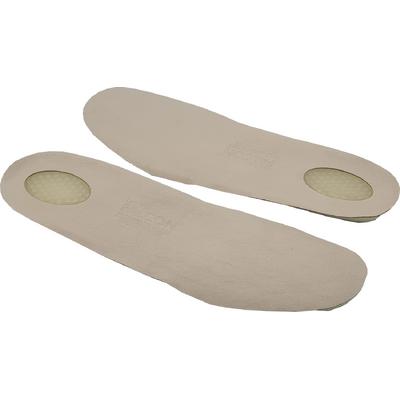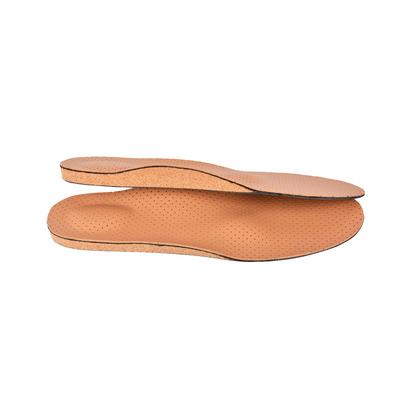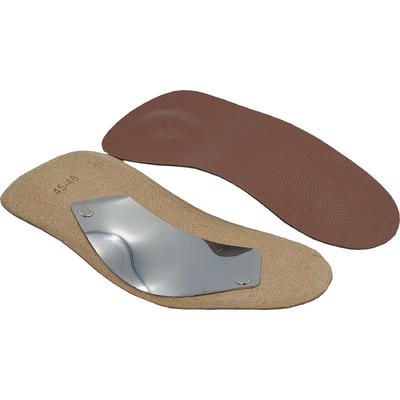Insole Size
|
TELEFONDA SİPARİŞ VER
+90 212 671 20 21
Tıklayın, telefonunuzu bırakın. Sizi arayalım.
Womens Insole for Plantar Fasciitis EBT Products Features
► Special insole model for plantar fasciitis patients.
► Women diabetic shoe insole products code: EBT
► it is antibacterial. Don’t sweat.
► %100 soft genuine leather.
► It can be easily inserted into your shoe.
► Men numbers: from 35 to 43
► it can be cut it from fron of insoles to adjust.
► Made in Türkiye
► Brand: Falcon
► With soft silicone support area at the heel
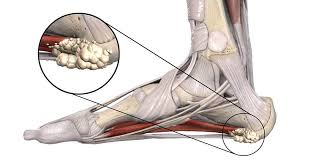
What is plantar fasciitis?
Plantar fasciitis typically causes a stabbing pain in the bottom of your foot near the heel. The pain is usually the worst with the first few steps after awakening, although it can also be triggered by long periods of standing or rising from sitting. The pain is usually worse after exercise, not during it.
What is risk factors?
Though plantar fasciitis can arise without an obvious cause, factors that can increase your risk of developing plantar fasciitis include:
► Age. Plantar fasciitis is most common between the ages of 40 and 60.
► Certain types of exercise. Activities that place a lot of stress on your heel and attached tissue — such as long-distance running, ballistic jumping activities, ballet dancing and aerobic dance — can contribute to an earlier onset of plantar fasciitis.
► Foot mechanics. Being flat-footed, having a high arch or even having an abnormal pattern of walking can affect the way weight is distributed when you’re standing and put added stress on the plantar fascia.
► Overweight problem. Excess pounds put extra stress on your plantar fascia. Occupations that keep you on your feet. Factory workers, teachers and others who spend most of their work hours walking or standing on hard surfaces can damage their plantar fascia.
Benefit of using insoles for heel spur.
► Pain relief: Heel spurs can cause significant pain and discomfort, especially during walking or standing. Insoles are designed to redistribute pressure and provide additional cushioning, reducing the impact on the affected heel. This can help alleviate pain and allow individuals to engage in daily activities with less discomfort.
► Support and alignment: Insoles are often designed to provide arch support and help correct any biomechanical issues in the foot. Proper alignment of the foot can reduce strain on the plantar fascia (the tissue connecting the heel to the toes) and lessen the pressure on the heel spur itself.
► Shock absorption: Insoles with shock-absorbing properties can help absorb the impact of each step, reducing the stress on the heel bone. This can be particularly beneficial for individuals with active lifestyles or jobs that involve prolonged periods of walking or standing.
► Prevention of further complications: By providing support and cushioning, insoles can prevent the progression of the condition and minimize the risk of developing additional foot problems, such as plantar fasciitis or Achilles tendonitis.
► Convenience and versatility: Insoles can be easily inserted into most types of footwear, making them a convenient treatment option. They can be used in everyday shoes, athletic shoes, and work boots, allowing individuals to manage their condition without significant disruption to their daily routines.
Recommendations for heel spur disease
You can reduce your heel pain with assistive products but your plantar fasciitis should be well studied and you should take various precautions against this disease.
The formation of heel pain may be due to some factors.
► Rest: Give your feet adequate rest and avoid activities that worsen the pain. High-impact exercises and prolonged standing or walking may exacerbate the symptoms.
► Ice therapy: Apply ice packs to the affected area for 15-20 minutes several times a day to reduce inflammation and alleviate pain.
► Footwear: Wear well-fitting, supportive shoes with good cushioning. Avoid high heels and flip-flops, as they can worsen the condition.
► Orthotic insoles: Consider using orthotic insoles or shoe inserts to provide additional support and cushioning to the affected foot.
► Stretching exercises: Perform gentle stretching exercises for the calf muscles and the plantar fascia to improve flexibility and reduce tension in the foot.
► Physical therapy: If the pain persists, consult a physical therapist for specialized exercises and treatments tailored to your condition.
► Heel pads and cushions: Consider using heel pads or cushions to provide extra support and alleviate pressure on the heel spur.
► Weight management: If you are overweight, losing weight can help reduce the pressure on your feet and alleviate symptoms.
► Avoid barefoot walking: Walking barefoot can put extra strain on the plantar fascia, so wear supportive footwear even when at home.
► Night splints: Night splints can help stretch the calf and the arch of the foot while you sleep, providing relief in the morning.
► Cortisone injections: In some cases, a healthcare professional may recommend cortisone injections to reduce inflammation and pain.
► Extracorporeal Shock Wave Therapy (ESWT): This treatment uses shock waves to stimulate healing and reduce pain. It may be recommended for chronic cases that do not respond to other treatments.
► Surgery: In severe cases where conservative treatments do not provide relief, surgery to remove the heel spur or release the plantar fascia may be considered.
Remember, the best course of action for managing heel spur disease varies from person to person, so it's essential to consult a healthcare professional for an accurate diagnosis and personalized treatment plan. Early intervention and appropriate management can often lead to improved outcomes and a reduction in symptoms.
It is important to abandon habits by detecting the cause of the heel spur. Weight problems and long-term walking are among the most common factors of this disease.
Check out the categories below that we think might be of interest to you.
Can I shop safely on your site?
All purchases you make through https://www.medicalfootwear.net use the latest technologies and the best service provider for your safety.
Once you enter your credit card number under SSL security, you can be sure that no one will have access to this information. No one can view or access your information except you. The information about your number is encrypted and sent to your bank if you enter your credit card number. Your information can not be accessed by third parties, including https://www.medicalfootwear.net in this sense. Your card information is only known and protected by you and your bank.
Product price : 85.00 USD
When are orders shipped?
Products are generally shipped within 1-5 business days.
When will my order be delivered?
Products shipped are usually delivered to your address within 3-7 business days.
We ship with Fedex, DHL, UPS adn TNT, which are the leading cargo companies of express courier transportation. If you have a different request, please contact our company.
Where can I track my order?
You can track your order in the “my orders” section on our website. In addition, you can track the shipment directly by clicking on the link that is sent to your email address.
I cannot access the tracking information for my order. What am I supposed to do?
You need to contact us directly or through our support department if you encounter such a problem.
Which regions do you ship to?
You can shop online from anywhere in the world.
Safe Shopping
Free Shipping
Shipping Within 1-5 Days
Best Quality Products
These Products May Be Interested
Diabetic Insole for Womens OBT
79.00 USDDiabetic Insole for Mens OET
79.00 USD
Best Selling Products
Diabetic Insole for Mens OET
79.00 USDDiabetic Insole for Womens OBT
79.00 USD

